Temporary Roof
A temporary roof is usually used to provide weather protection for a building project. Temporary roofs are efficient modular systems that can be installed and dismantled quickly and have the flexibility to remove critical sections. Whether you need to surround an entire building, a roof, or a specific work area, temporary roofs and shelters offer a universal solution for any project, from controlled temperature environments, encasement, buildings or workshops, or protective decks.
Why should use temporary roof
APAC temporary roof protects your site from bad weather!
APAC temporary roof protects your site and makes your job more profitable!
First of all, you can ensure that your project stays on schedule and is ultimately delivered on time. You can even save up to 20% of your working days if you use a temporary roof. And once a building is completed, the cost of dealing with moisture damage is very high, an APAC temporary roof is your protection against unnecessary costs.
APAC Temporary roofing brings more than just financial benefits. It also improves the working environment and mood of workers, and employees are more motivated to work in a dry, weatherproof workplace. With a temporary roof, their clothes don’t get wet and they can work more efficiently in all weathers—Pouring concrete, painting, welding, etc.
economic
Highly cost-effective products to help reduce your expenses.
design capacity
Provide customized services according to customer needs.
quality control
Strict quality inspection process to ensure product quality.
factory direct
We use the most advanced equipment, technology, and materials.
Cost-effective Temporary Roof Solutions
A temporary roof is an all-aluminum modular system designed to provide comprehensive weather protection for building projects. Utilizing the innovative slide sheet keder model, it ensures the roof sheets can be safely installed from below, leveraging the proven sliding button system for secure sheet tracking. This system is essential for maintaining project timelines and preventing weather-related delays and damage.
The heavy-duty 790mm deep structural beam, central to the system, can cover large spans, making it ideal for demanding applications.
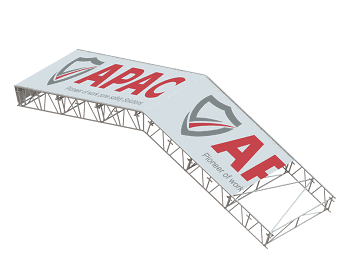
Keder Roof
Keder roof, also known as temporary roof system or weather protection system. It is made from Aluminium material, is a lightweight roof system for protecting weather.

Shrink Wrap Roof
APAC gonna give you the most complete and honest guide to shrink-wrap roofs, and how it’s different from every other product that’s on the market.

Keder Roof Sheeting
APAC’s Keder Roof Sheeting system is a powerful solution for temporary weather protection. It conforms to standard DIN 4102 B1, M2 and is easy to install.
Increase Your Business with APAC Temporary Roof
Keder roof features:
The APAC keder roof system is based on aluminum lattice beams with depths of 750 mm and 450 mm. The sturdy beam provides a very sturdy structure with a large span and a long service life, and the roof of APAC can be used repeatedly.
- Single or double slope roof configurations.
- Durable PVC fabric tarpaulin are securely fastened in the Keder track.
- Secure installation using the roll-out method.
- Easy to achieve split or staggered brackets.
- Keder tracks slide into place for safe and fast assembly.
- Unique alloy track pins improve joint stability between tracks.
- 18 degree inclination for efficient water dispersal and no water pooling.
- Individual compartments open easily to allow access to crane materials.
Shrink Wrap Roof features:
- Water, tear and UV resistant
- Save time and money
- Meets flame retardant standards
- Shields from harsh weather
- Protects workers from field-generated dust and debris
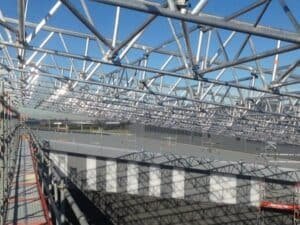
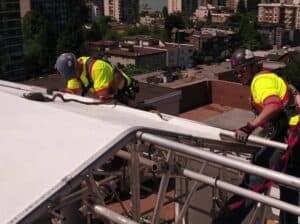

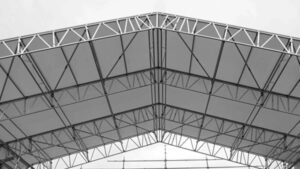

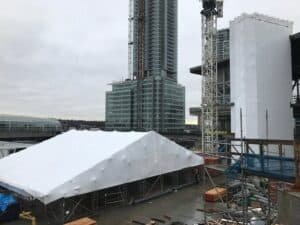
Temporary Roofing USER INSTRUCTION
APAC temporary roof can be used as a whole covering, as a fixed or wheeled roof, as a wheeled roof partly covered on an opening for material access, as a temporary storage unit, and as an on-site workshop. APAC temporary roof is very easy to install. If you have a crane, you can assemble the protective device on the ground and then hoist it in place.
Your Reliable Temporary Roof Manufacturer in China
We are a factory direct supplier of quality keder roof systems, shrink warp roofs, PVC tarpaulin, and snow tarps. We have over years of experience in this field and can bring competitive prices.
Contact us for an estimate now!

laser cutting

manual welding

automatic welding
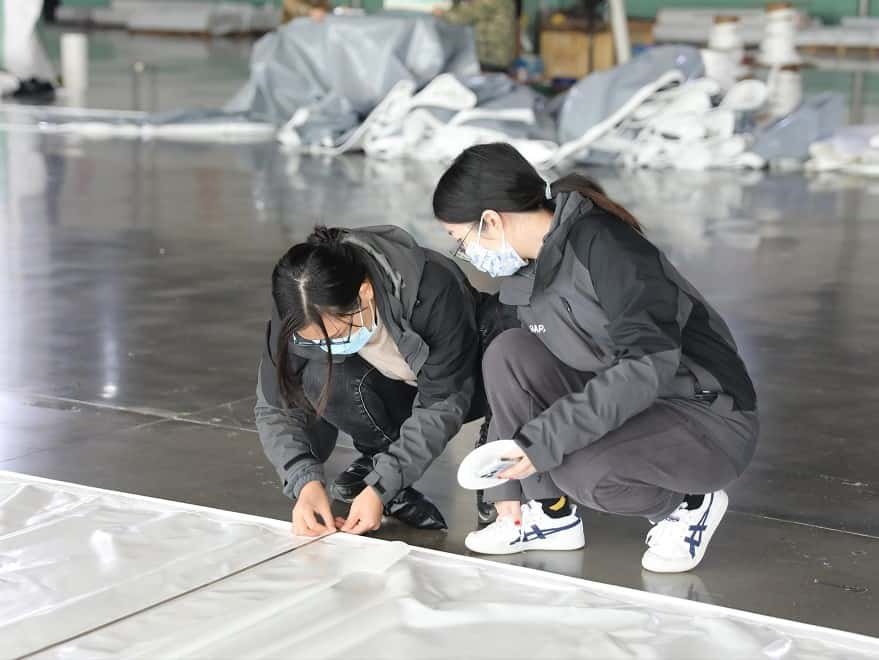
quality control
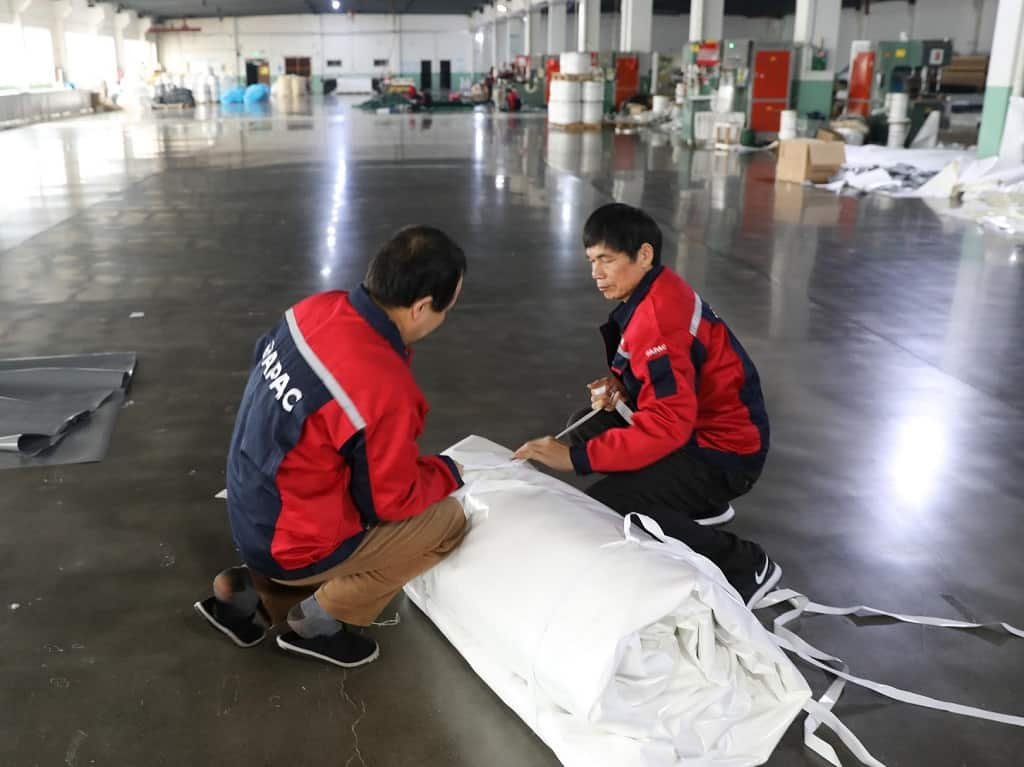
packing

delivery
temporary roof in video
We have all kinds of videos on temporary roofs on our YouTube channel, so please go ahead and subscribe.
- Weather Protection: Prevents rain and wet weather from disrupting construction activities, saving time and money.
- Certified Design: Each APAC temporary roof and supporting structure is designed and certified by qualified engineers.
- Modular System: Compatible with almost every scaffolding system, allowing for versatile applications.
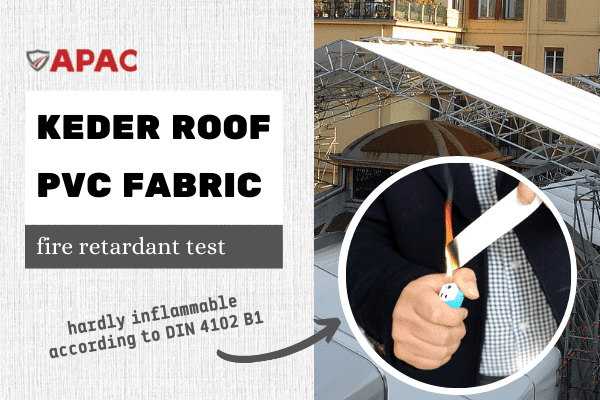
Fire Retardant Test
APAC temporary roof products meet the standard DIN 4102-1.
In this video, we set a fire under our fabric strip with no issues.

laser cutting
APAC uses laser cutting technology for high production efficiency and to ensure that all products meet specifications.
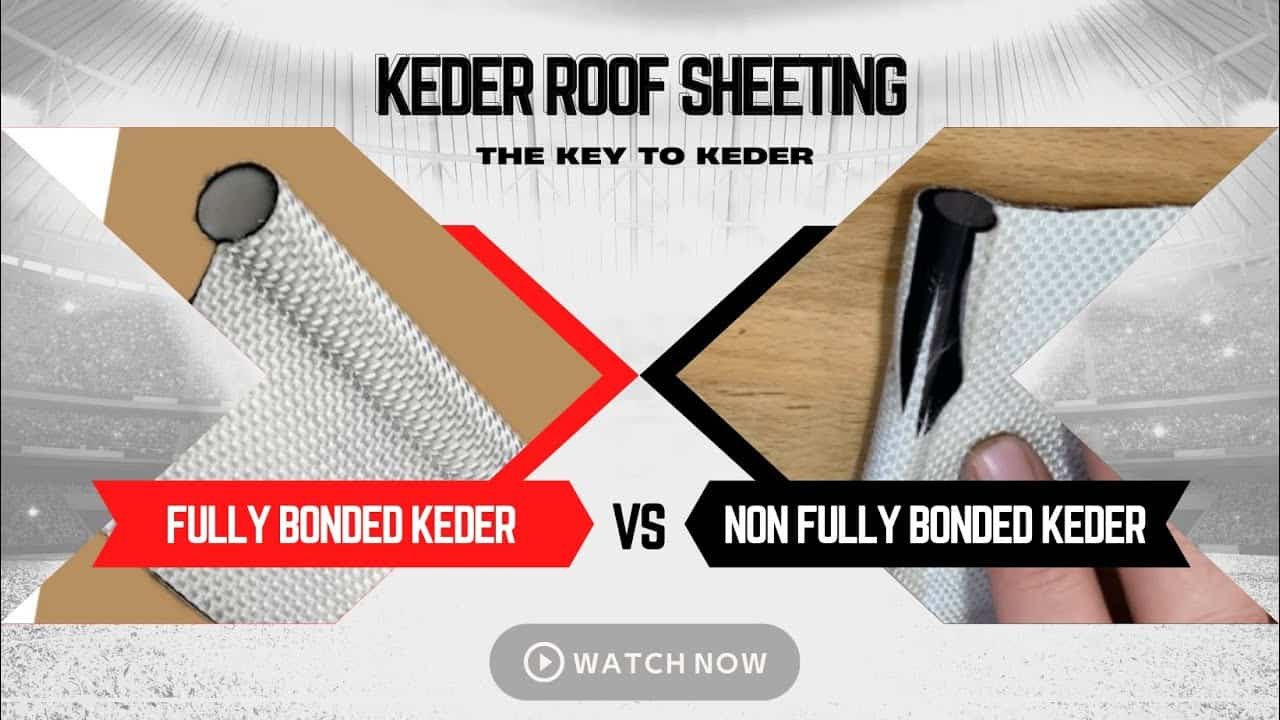
The Comparison between APAC Sheeting and Others
APAC adopts fully bonded keder, which is more durable than other brands, more details in video.
Applications
APAC’s temporary roofing systems are versatile and suitable for a wide range of applications, including:
Residential and Commercial Projects: Protecting buildings from the elements during renovations or new constructions.
Industrial and Infrastructure Projects: Ensuring work continues uninterrupted despite adverse weather conditions.
Events and Special Projects: Offering weather protection for outdoor events, stages, and temporary structures.
Temporary Roof | The Ultimate FAQ Guide
1. What Is A Temporary Roof?
A short roof is a modular covering system that you can use to protect your building or site area for a short period. They can effectively shield your new construction project or a site under maintenance against different weather conditions.
You can set up the temporary roofs easily and quickly with their high adaptive feature. If you want to reinstall them for some other construction site, you can also dismantle them quickly and reinstall them elsewhere.

Figure 1 – A Typical Temporary Roofing Example
2. Why Do You Need To Use Temporary Roofs?
You need temporary roofs for:
- Protecting your unfinished structure: There may be cases when you need to hold your construction works for some financial matters or unforeseen complexities for a substantial amount of time. But obviously, your structure will be critically damaged during this time due to harsh weather conditions.
You may be looking for permanent roofing plans at that time, but eventually, you will have to break that off. So, you will waste excess money. The better option for you, in this case, should be to invest a lesser amount of money after temporary roofing systems. You can dismantle them when you are done. - Create a temporary working station: During the construction, your staff may require a temporary station near a facility where they need to work. So, you can create a small and temporary roofing system for their comfortable working environment.
- Repair works: If you perform repair works in a damaged area, you need to build a temporary roof to proceed with a cost-effective solution.
- Equipment and material storage: Storing construction materials or equipment under an open sky will damage them. You can create a shed with a temporary roof for their protection and storage.
- Save time: When the construction work is underway, you don’t want to waste your valuable time installing a permanent roof. Since you can install temporary roofs in a short period, your time will be saved securing a temporary roofing system.
- Crane access: If you need to enable crane access for material transferring through a structure, you need to use mobile roofs that you can open during material transfer.
- Emergency requirements: Temporary roofing materials are made with fire-retardant materials. So, you can use them reliably in areas where you have the regulations to maintain fire-retardant standards.
3. What Are The Types Of Temporary Roofs For Construction Sites?
There are different types of temporary roofs that you can use for construction sites. The common ones are:
- Corrugated iron or tin sheeting:You can use different sheeting options to cover over the roof scaffoldings like tin sheets to create a temporary cover.
But the initial investment for this kind of temporary roofing is high since you need a high investment for the sheeting materials. Another issue is that the roof completely blocks off incoming light, so the inside environment is dark.
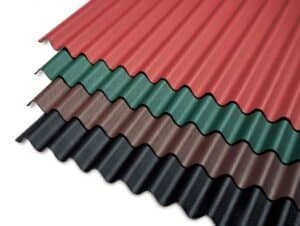 Figure 2 – Corrugated Iron Roofing Sheet
Figure 2 – Corrugated Iron Roofing Sheet
- Keder roof: The keder is a highly practical temporary roofing solution. It is actually not a single roof but a roofing system consisting of a railing system and sheeting. This roofing system is extremely popular since you don’t need any additional tools to install the complete roof.
You can secure the connections using the built-in boltless connection features. You can quickly and easily connect the rails with the sheeting fabric.
Most of the time, the railing components are manufactured from aluminium, which makes them extremely lightweight and durable. For the sheeting material, you can choose from a range of different types of fabric roofing sheets.
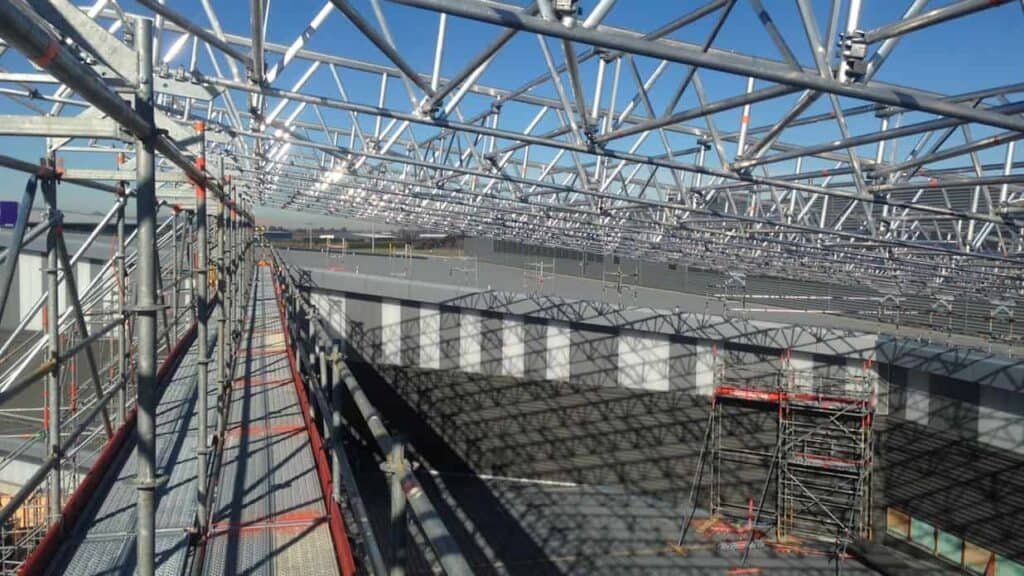 Figure 3 – Keder Roof System
Figure 3 – Keder Roof System
- Ubix roof: You can install the ubix roofing system on any scaffolding system or tube fittings. Due to the component’s design features, you can assemble very long spans from 20 m up to 35 m or more. So, they are a very practical temporary roofing system in large-scale construction sites.
- Cassette roofs: Cassette roofs are extremely strong and built with steel cassettes. You can quickly install this roofing system with a few additional components. You can also create extensively long spans with this roofing system.
- Shrink-wrap temporary roof: You need to assemble scaffolding components on the topmost surface to clamp the shrink-wrap in a shrink wrap roofing system.
4. Are The Temporary Roofs Weather Resistant?
The temporary roofs are constructed to protect your structure or site from harsh weather conditions. So, the manufacturers design them so that they can efficiently sustain against weathering agents like:
- Rain: The top sheeting that you install with the frame provides the ultimate protection against rain. They are manufactured from waterproof materials. So, they pass the accumulated water through the designed drainage to the ground.
- Sunlight: Any covering you use for the temporary roofs will withstand the high UV ray from the sunlight. Most manufacturers induce anti-UV absorbing agents in the sheeting material in a process called ‘anti-UV stabilisation’. It makes the materials durable against UV rays.
- Wind: The frame of the temporary roof system, whether you use a scaffolding system or railing frame, can withstand high wind speeds. But you have to plan and design them first to withstand the wind pressure and force.
5. Temporary Vs Permanent Roofing, Which Is Better For Your Construction Sites?
Most of the time, in construction sites, you need roofing solutions temporarily. If you invest in a permanent roofing solution, you have to break them again when you are finished with your project.
So, you need additional costs to break them after use. Additionally, the initial cost of material is also higher for permanent roofs.
On the other hand, if you use temporary roofing systems, you need a smaller initial investment. Even you can quickly and easily dismantle them after usage and use them for other areas. So, the temporary roofing solution is better for your construction sites. Figure 4 – Shrink Wrap For Temporary Roofing
Figure 4 – Shrink Wrap For Temporary Roofing
6. Are The Temporary Roofs Fire Resistant?
When buying the sheeting material for your temporary roof, you must ask the supplier to prove the fire-retardant properties.
Manufacturers integrate additives with the materials so that they can extinguish themselves after a short period after you remove the source of the fire. The temporary roof sheeting materials comply with flame retardant European standard EN13501-1, class B S1, D0; and some manufacturers offer materials that comply with flame retardant EN 13501-1: 2013 Class B – s2, d0 with M1 standards.
recent post

ALL YOU NEED TO KNOW ABOUT PE TARPAULINS AND PVC TARPAULINS.
PE and PVC are two common materials in industry, but what are they? How can we choose them? Read this blog and find the answer.

What’s your best choice for temporary roof cover?
Three kinds of temporary roof cover, their advantages and disadvantages, and which one is the most suitable for your projects? Read this blog and find the answer.
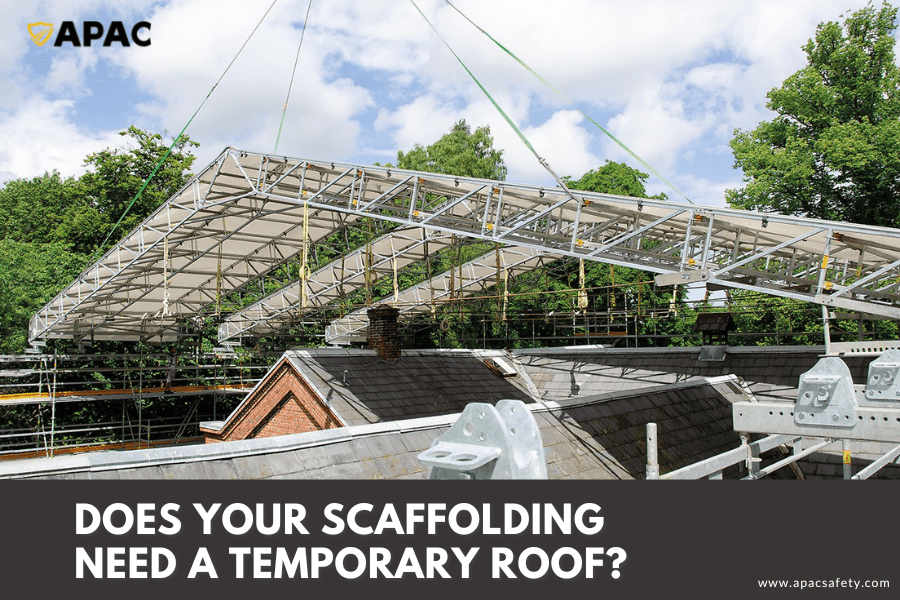
DOES YOUR SCAFFOLDING NEED A TEMPORARY ROOF?
Does your scaffolding need a temporary roof? The reason why need install a temporary scaffolding roof? Read more in this article.
TELL YOUR REQUIREMENTS
The APAC temporary roof is simply and safely assembled on a platform at one end of the roof, and then rolled out in sections after completion. Since all materials are hoisted to the platform, the cost of the crane can be reduced to a minimum.
If you have a project that needs our temporary roof, please feel free to contact us, we will provide you with the most competitive price and good quality.


